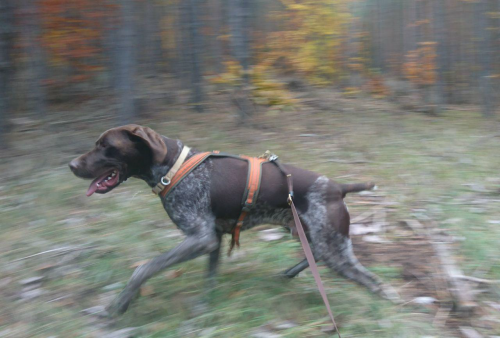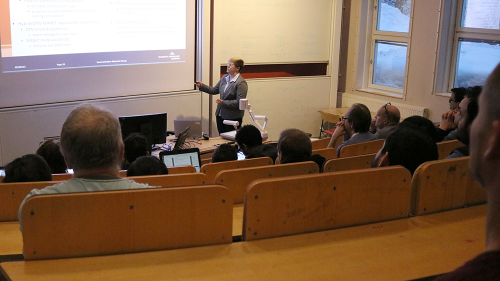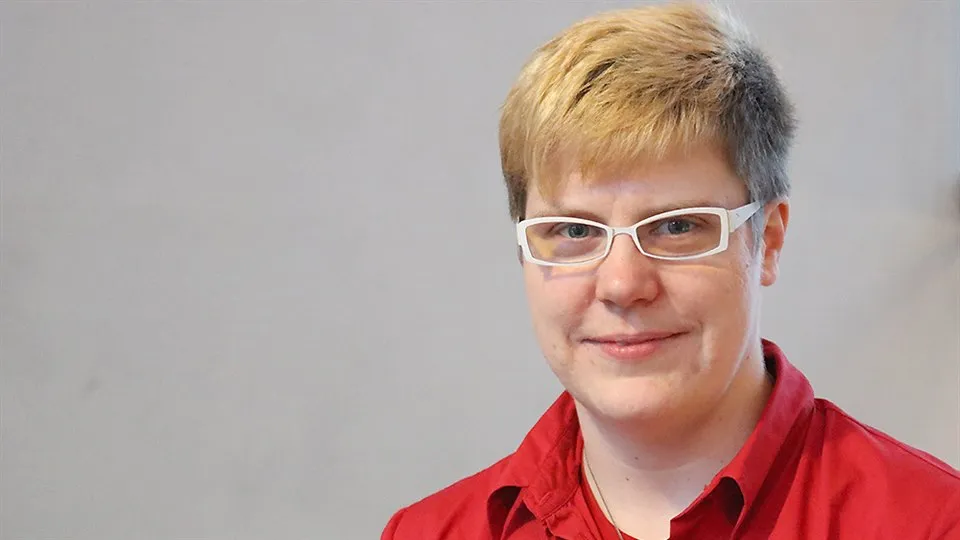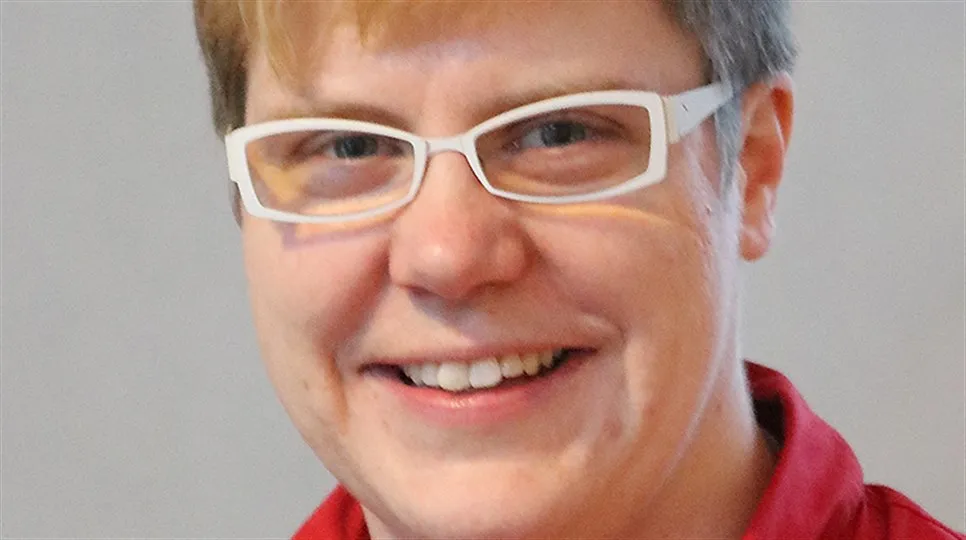Silvia Krug – new Postdoc at STC
In January Dr. Silvia Krug joined our team at STC as a Postdoc in the SMART project. Silvia’s research within Communication Networks, Embedded Systems and experience in Internet of Tjings (IoT) and Industrial Internet of Things (IIoT), will be a great asset to us and we are very glad to have her with us!
In the SMART project Silvia will be working on trade-offs between in-sensor data processing/computation and communications with respect to node energy consumption and service latency with a focus on industrial applications. There it is important do get answers fast and ensure a relatively large runtime of the nodes, which can be contradicting especially for large amounts of data. For a start her focus will be on modeling communication aspects in this area to complement the knowledge of the other PhD students regarding computation and partitioning of computational processes.
Silvia grew up near Ilmenau, located in the middle of the German state of Thuringia. Her dad got her early into technology by bringing her in the tractor and showing her the mechanics. The teachers in elementary school were also good at boasting interest in science and mathematics. After an Apprenticeship training at IBM with a focus on programming and IT, she studied at the Bachelor of Computer Science at the University of Applied Sciences Darmstadt.
Later on she continued her studies for a M.Sc in Computer Engineering at the Technische Universität Ilmenau at which she also completed her PhD in the autumn 2017. Before coming to Sweden Silvia was working for a research institute which is focused on sensors, design of embedded system, viral sensor systems and IoT systems.
Improved communication in rescue operations
Silvia's doctoral dissertation is called “H3N – Analysis Toolbox for Delay/Disruption-Tolerant Routing in First Responder Ad Hoc Networks” targeting ad hoc based communication for first responders using a hybrid DTN-MANET communication scheme with focus on routing protocols and quality of service aspects to ensure the timely delivery of messages.
She has looked at how to improve the communication system for people working in rescue missions. To get information about their problems, Silvia had contact with a rescue force that also works internationally and has been assisting at earthquakes in Haiti and Nepal.
In Germany they are currently switching from analog radio to digital radio, terrestrial trunked radio. This causes problems for the first responders in a rescue mission as the digital radio is unreliable. Either is working perfectly or it is not working at all for instance in difficult terrain. Cellular communication is not an option either if the reception is bad. Having no information on an ongoing rescue mission makes the task of the coordinator very difficult as important decisions have to be made in order to proceed.
- With the old analog radio you might be able to hear someone even though the line was scratchy and the quality was bad. The problems with the digital radio is that it’s only working as long as the technology is able to make error corrections. Then you get a perfect signal. Otherwise, it throwing away the information package and messages gets lost. An alternative solution is a hybrid network architecture combining traditional Mobile Ad Hoc Networks, MANETs, and Delay Tolerant Networks, DTNs. This architecture ensures robust communication but the delay might be too large. My simulations showed that as much as 30 percent of the messages were received too late, Silvia explains.
Rescue Dog as additional relays

Silvia’s dog Asko, a 1.5 year old German Shorthaired Pointer.
Silvia has modelled different scenarios and placing nodes in addition to the devices carried by rescue workers are one option to enhance connectivity and thus limit the delay. These nodes could be placed at fixed positions or be mobile eventually with controllable mobility. It is even possible to equip the dogs with devices to act as additional relays not only to track their position of the dogs. The rescue workers do not have the possibility to live monitor the dogs today. They don’t know whether the dogs cover the assigned area as trained or if they are chasing animals.
- When we used results from outdoor measurements and simulations, we could show that equipping the dogs with communication devices also enhances the connectivity between the rescuers. However, DTN routing protocols are not always able to benefit from this enhancement as stable connections are out of focus. I was able to design a hybrid scheme that adds the required awareness and thus enables efficient message forwarding, Silvia says.
An archer who loves the outdoor life
In her spare time, Silvia is devoted to archery for a few years back. A perfect way to let go all around and just focus on the goal. She has become a four-time state champions in four different disciplines. Silvia also loves staying outdoors, especially with her dog Asko, a 1.5 year old German Shorthaired Pointer. He is currently staying with her mum in Germany as he is not a "city dog” (Silvia lives in an apartment in the central part of Sundsvall).
On the question of what she thinks of Sweden so far, her face shines up in a smile. Silvia explains that she has visited the Nordic countries in recent years and that is why she was applying for a postdoc in Sweden. She really loves snow and fortunately her new hometown welcomed her with the snowiest winter for many years!

Silvia presenting her research for the STC personell and doctoral students.

